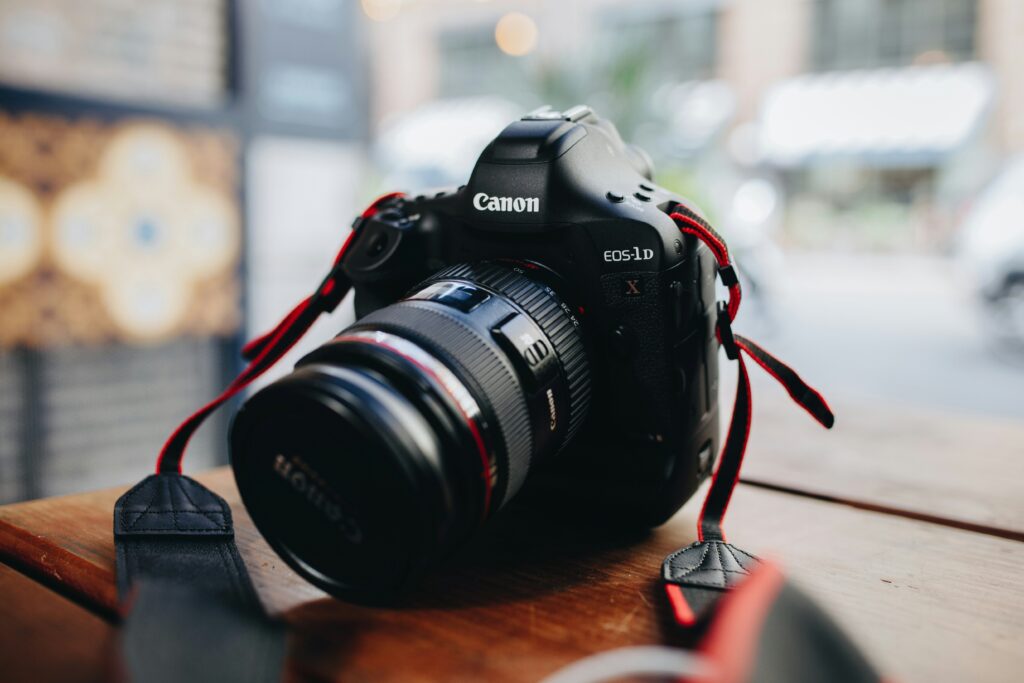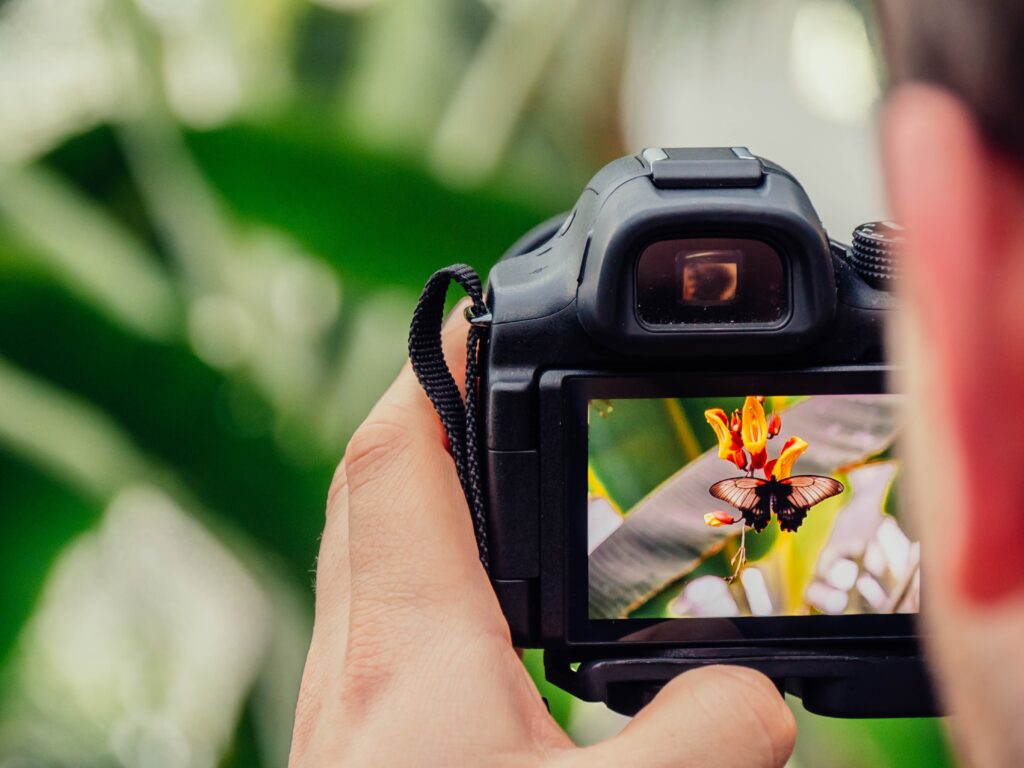Exploring the Best DSLR Cameras for Beginners

Introduction
Are you ready to take your photography skills to the next level? Whether you’re an aspiring photographer or simply want to capture stunning moments in high quality, a DSLR camera is your best bet. With their advanced features and manual controls, DSLRs offer endless possibilities for creativity. But with so many options out there, how do you choose the right one for beginners like yourself? In this blog post, we will explore the best DSLR cameras for beginners, taking into consideration factors such as budget, megapixels, lens compatibility, and manual controls. So grab your lens cap and let’s dive in!
What is a DSLR Camera?
So, what exactly is a DSLR camera? DSLR stands for Digital Single-Lens Reflex. Essentially, it’s a type of camera that uses a mirror and prism system to reflect light from the lens to the viewfinder. This allows you to see exactly what your image will look like before you take the shot.
One of the key advantages of a DSLR camera is its ability to interchange lenses. This means you can choose different lenses depending on the subject or effect you want to achieve. From wide-angle lenses for capturing breathtaking landscapes, to telephoto lenses for getting up close and personal with distant subjects – the possibilities are endless.
Another important feature of DSLRs is their manual control options. Unlike point-and-shoot cameras or smartphones, which often rely heavily on automatic settings, DSLRs allow you to have full control over your exposure settings such as aperture, shutter speed, and ISO. This gives you greater creative freedom and flexibility in capturing images just as you envision them.
Furthermore, DSLRs generally have larger sensors compared to other types of cameras. Larger sensors mean better image quality with less noise even in low-light conditions. So whether it’s capturing stunning portraits or shooting vibrant street scenes at night, a DSLR has got your back.
In addition to these features, many modern DSLR cameras also come equipped with advanced autofocus systems that help ensure sharp focus on your subjects quickly and accurately.
Owning a DSLR camera opens up a world of possibilities for beginner photographers who are eager to learn and grow their skills. With their interchangeable lenses, manual controls, superior image quality capabilities,and advanced autofocus systems – they truly offer an exciting journey into the world of photography!
Why Should You Consider a DSLR?
When it comes to capturing high-quality photos and exploring your creativity in photography, a DSLR camera is definitely worth considering. Here are a few reasons why:
Image Quality: DSLRs are equipped with larger image sensors, which means they can capture more detail and produce sharper images compared to compact cameras or smartphones.
Interchangeable Lenses: One of the biggest advantages of using a DSLR is the ability to change lenses. This gives you the flexibility to choose different focal lengths for various types of photography, whether it’s wide-angle landscapes, telephoto wildlife shots, or beautiful macro close-ups.
Manual Controls: Unlike point-and-shoot cameras or smartphones that rely heavily on automatic settings, DSLRs offer extensive manual control options. This allows you to have full control over exposure settings like aperture, shutter speed, and ISO sensitivity, giving you more creative freedom.
Speed and Performance: DSLRs excel in terms of autofocus speed and overall performance. Whether you’re shooting fast-moving subjects or capturing action-packed moments, a DSLR will provide quick and accurate focusing capabilities along with burst mode shooting for continuous shots.
Durability: Built to withstand rugged conditions and heavy use by professionals, most entry-level DSLRs are built with robust construction that ensures longevity even under demanding circumstances.
If you’re passionate about photography and want to take your skills to the next level while enjoying superior image quality and creative possibilities through interchangeable lenses and manual controls – investing in a beginner-friendly DSLR camera is definitely worth considering!
Factors to Consider When Choosing a DSLR

Budget is an important factor to consider when choosing a DSLR camera. Determine how much you are willing to spend and look for options within that range. Remember, there are excellent entry-level DSLRs available at affordable prices.
Megapixels play a role in the image quality of your photographs. Higher megapixel count doesn’t necessarily mean better quality, but it does allow for more flexibility when cropping or printing larger images. For beginners, cameras with around 20-24 megapixels should suffice.
Lens compatibility is crucial because it determines the variety of lenses you can use with your camera. Nikon and Canon offer wide selections of lenses, making them popular choices among beginners. However, other brands like Sony and Pentax also have great lens options.
Manual controls give you greater control over your photography experience. Look for a camera that offers manual shooting modes such as aperture priority, shutter priority, and full manual mode. These settings will allow you to experiment and grow as a photographer.
Consider these factors carefully before investing in a DSLR camera that suits your needs as a beginner photographer!
A. Budget
When it comes to choosing a DSLR camera as a beginner, one of the most important factors to consider is your budget. While there are high-end options available, you don’t necessarily need to break the bank to get started in photography.
Setting a budget will help narrow down your choices and prevent you from overspending on features that you may not need at this stage. It’s important to strike a balance between affordability and functionality.
Fortunately, there are several great DSLR cameras on the market that offer excellent performance without draining your wallet. These entry-level models often come bundled with basic lenses, making them an ideal starting point for beginners.
Remember that investing in additional lenses or accessories can be more costly in the long run, so consider allocating some of your budget for those items as well. And keep in mind that while price is certainly an important factor, don’t compromise too much on quality – look for reputable brands known for their reliability and customer support.
Finding the right DSLR camera within your budget will set you up for success as you embark on your photography journey! So take some time to research and compare different options before making your final decision.
B. Megapixels
When it comes to choosing a DSLR camera, one of the important factors to consider is the number of megapixels. Megapixels determine the resolution and clarity of the images you capture. While higher megapixel count may seem enticing, it’s not always necessary for beginners.
Having more megapixels means you can print larger-sized photos without losing quality. However, if your main purpose is to share your photos online or print standard-sized prints, a lower megapixel camera will still deliver excellent results.
It’s worth noting that higher megapixels also mean larger file sizes, which can quickly fill up your storage space. So unless you plan on printing large posters or cropping heavily in post-processing, a camera with around 18-24 megapixels should be sufficient for most beginners.
Instead of getting caught up in the numbers game, focus on other aspects like lens quality and sensor size when choosing a DSLR camera. These factors have a greater impact on overall image quality than just the number of pixels alone.
Remember, photography is about capturing moments and telling stories through visuals. Don’t get too hung up on technical specifications; choose a camera that feels comfortable in your hands and inspires you to explore and create stunning images!
C. Lens Compatibility
When choosing a DSLR camera as a beginner, one important factor to consider is lens compatibility. The great thing about DSLRs is that they offer the flexibility of interchangeable lenses, allowing you to capture different types of shots and explore various creative possibilities.
Different camera brands have their own lens mounts, which means not all lenses are compatible with every camera body. It’s crucial to ensure that the lenses you want to use are compatible with the DSLR you choose. Canon cameras typically use EF or EF-S mount lenses, while Nikon cameras use F-mount lenses.
Lens compatibility also extends beyond just brand-specific mounts. You should also consider factors like autofocus capabilities and image stabilization when choosing your lenses. Some older lenses may require manual focus on newer camera bodies or lack features like optical image stabilization.
Additionally, it’s worth considering third-party lens options from manufacturers such as Sigma and Tamron. These companies often produce high-quality lenses at more affordable price points compared to original equipment manufacturer (OEM) brands.
Having a wide range of lens options available for your chosen DSLR will allow you to grow as a photographer and experiment with different styles and techniques without being limited by equipment constraints
D. Manual Controls

When it comes to photography, having control over your camera settings can make a huge difference in the quality of your images. That’s why manual controls are an important factor to consider when choosing a DSLR camera for beginners.
Manual controls allow you to adjust settings such as aperture, shutter speed, and ISO manually, giving you more creative freedom and allowing you to capture exactly what you envision. With these controls, you can experiment with different depths of field by adjusting the aperture or freeze fast-moving subjects by manipulating the shutter speed.
Having manual control also means that as your skills improve, so does your ability to push the boundaries of creativity. You have complete control over exposure settings which allows you to capture stunning photos in challenging lighting conditions like low light or high contrast situations.
Not all DSLR cameras offer extensive manual controls, so it’s important to choose one that provides easy access and intuitive operation. Look for cameras with dedicated buttons or dials for quick adjustments on the go. Additionally, some models offer touchscreens or customizable menus that make navigating through various settings easier.
Having manual controls empowers beginner photographers by enabling them to learn and grow their skills while capturing remarkable images. So consider this feature when selecting your first DSLR camera!
Top 5 DSLR Cameras for Beginners
If you’re just starting your journey into the world of photography, choosing the right camera can be a daunting task. Luckily, we’ve compiled a list of the top 5 DSLR cameras for beginners to help narrow down your options.
First on our list is the Nikon D3500. With its user-friendly interface and excellent image quality, this camera is perfect for those who are new to DSLRs. It boasts a compact design and intuitive controls that make it easy to use straight out of the box.
Next up, we have the Canon EOS Rebel T7i. This camera offers advanced features such as a vari-angle touchscreen and fast autofocus capabilities, making it ideal for capturing both stills and videos. The Rebel T7i also has built-in Wi-Fi and Bluetooth connectivity, allowing you to easily share your images with friends and family.
For those looking for something more compact without sacrificing performance, consider the Sony Alpha A6000. This mirrorless camera packs a punch with its fast autofocus system and impressive low-light performance. Its lightweight body makes it comfortable to carry around all day while exploring different shooting scenarios.
If weather resistance is high on your priority list, then look no further than the Pentax K-70. With its durable build and extensive weather sealing, this camera can withstand various outdoor conditions without compromising image quality. The K-70 also offers an impressive ISO range that allows you to capture stunning shots in challenging lighting situations.
Each of these cameras has its unique strengths catered towards beginners in photography. Remember though that ultimately what matters most is finding a camera that suits your needs as well as inspires creativity! So take some time to research each option before making your decision – happy shooting!
A. Nikon D3500
The Nikon D3500 is a fantastic DSLR camera option for beginners who are looking to dip their toes into the world of photography. With its user-friendly interface and impressive image quality, it’s no wonder that this camera is highly recommended by experts in the field.
One of the standout features of the Nikon D3500 is its compact and lightweight design, making it incredibly portable and easy to handle. This means that you can take it with you wherever you go without feeling weighed down or burdened by heavy equipment.
In terms of performance, the D3500 boasts a 24.2-megapixel sensor, allowing for stunningly detailed images with vibrant colors and excellent clarity. Whether you’re capturing breathtaking landscapes or candid portraits, this camera delivers exceptional results every time.
Additionally, the D3500 offers an impressive battery life that allows for extended shooting sessions without worrying about running out of power. This feature is particularly beneficial when traveling or exploring new locations where access to charging points may be limited.
Furthermore, this camera provides beginners with helpful guides and tutorials built into its menu system, making it easier than ever to learn about different photography techniques and settings. It truly caters to those who are just starting out on their photographic journey.
If you’re a beginner photographer looking for a reliable entry-level DSLR camera that delivers fantastic image quality while still being user-friendly and affordable, then the Nikon D3500 should definitely be at the top of your list!
B. Canon EOS Rebel T7i
The Canon EOS Rebel T7i is a popular choice among beginners looking to step up their photography game. With its impressive features and user-friendly interface, this DSLR camera offers a great combination of performance and affordability.
One standout feature of the Canon EOS Rebel T7i is its 24.2-megapixel APS-C sensor, which delivers high-resolution images with excellent detail and clarity. This means that you can capture stunning photos that truly showcase your creativity.
Another advantage of the Canon EOS Rebel T7i is its versatile autofocus system, which features 45 cross-type AF points for accurate subject tracking. Whether you’re shooting fast-moving subjects or capturing portraits with beautiful bokeh, this camera ensures sharp focus every time.
The Canon EOS Rebel T7i also boasts an intuitive touchscreen interface, making it easy to navigate through settings and menus. You can even use the touch screen to select your desired focus point or capture shots with a single tap.
With built-in Wi-Fi connectivity, you can quickly transfer your photos to your smartphone or tablet for instant sharing on social media platforms. Plus, the Canon EOS Rebel T7i supports NFC (Near Field Communication), allowing for seamless pairing with compatible devices.
The Canon EOS Rebel T7i is an excellent choice for beginners who want to take their photography skills to new heights. Its combination of advanced features and ease of use make it a top contender in the world of DSLR cameras for beginners
C. Sony Alpha A6000
The Sony Alpha A6000 is a fantastic option for beginners looking to step into the world of DSLR photography. With its compact and lightweight design, it’s easy to carry around and perfect for capturing shots on the go.
One of the standout features of the Sony Alpha A6000 is its impressive autofocus system. It boasts a whopping 179 phase-detection AF points, ensuring that your subjects are always in sharp focus, even when shooting fast-moving objects or in low light conditions.
Another great feature of this camera is its high-resolution electronic viewfinder (EVF), which allows you to see exactly how your image will look before you press the shutter button. This can be incredibly helpful for composing your shots and adjusting settings on-the-fly.
In terms of image quality, the Sony Alpha A6000 delivers stunning results. It features a 24-megapixel APS-C sensor that produces vibrant colors and excellent detail. Additionally, it has an ISO range of up to 25600, allowing you to capture clear images even in challenging lighting situations.
Furthermore, this camera offers Wi-Fi connectivity, enabling seamless transfer of photos to your smartphone or tablet for quick sharing on social media platforms or instant editing with photo editing apps.
If you’re a beginner photographer looking for a versatile and user-friendly DSLR camera with exceptional autofocus capabilities and excellent image quality, then the Sony Alpha A6000 should definitely be at the top of your list!
D. Pentax K-70

The Pentax K-70 is another excellent option for beginner photographers looking to step up their game. This camera offers a robust feature set and impressive image quality that rivals its competitors in the entry-level DSLR market.
One of the standout features of the Pentax K-70 is its weather sealing, making it ideal for outdoor photography enthusiasts. Whether you’re capturing stunning landscapes or wildlife in their natural habitat, this camera can withstand various weather conditions without compromising performance.
The K-70 boasts a 24-megapixel APS-C sensor, delivering sharp and detailed images even in low-light situations. With an ISO range of up to 102400, you can confidently shoot in challenging lighting conditions without worrying about excessive noise ruining your shots.
Another advantage of choosing the Pentax K-70 is its built-in Shake Reduction mechanism. This innovative technology compensates for camera shake by moving the image sensor instead of relying on lens-based stabilization systems found in other cameras. As a result, you can capture sharper images handheld and enjoy better stability when using telephoto lenses.
Additionally, the K-70 offers an optical viewfinder with nearly 100% frame coverage, giving you an accurate representation of what your final image will look like before pressing the shutter button. It also features a tilting LCD screen which comes in handy when shooting from high or low angles or taking selfies.
In terms of video capabilities, while not as advanced as some other models on this list, the Pentax K-70 still supports Full HD recording at up to 30 frames per second. It also has microphone input and headphone output jacks for improved audio control during video shoots.



